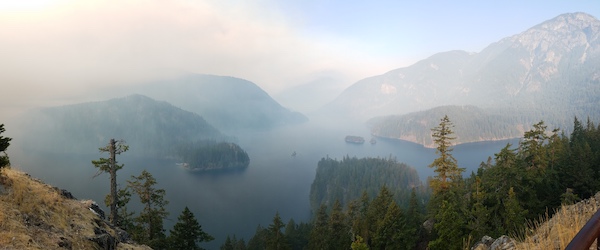
Feds Taking Up N Cascades Grizzly Restoration Again
National Park Service and US Fish and Wildlife Service officials say they are launching another look at restoring and managing grizzlies in Washington’s North Cascades, including designating any population there as experimental.

That would “give local land managers additional flexibility,” the feds said in a post-election press release that notes a previous effort that looked at bringing the big bears back to the region fizzled out in 2020, during the waning days of the Trump Administration, when the Department of Interior quit working on the project. There was quite a bit of local pushback but also support for reintroducing grizzlies.
Essentially, NPS and USFWS will restart with an environmental impact statement that looks at a range of alternatives for “restoring” grizzlies here and that will “support the recovery and eventual delisting of grizzly bears under the Endangered Species Act in the contiguous United States.”
Preliminary alternatives show the feds’ preferred plan is to “capture bears from source populations in interior British Columbia or the Northern Continental Divide Ecosystem” and then release them into the North Cascades.
“This is a first step toward bringing balance back to the ecosystem and restoring a piece of the Pacific Northwest’s natural and cultural heritage,” said North Cascades National Park Superintendent Don Striker said in the release. “With the public’s help we will evaluate a list of options to determine the best path forward.”
A part of the process will look at designating the bears as “a 10(j) experimental population designation, which would give local land managers additional flexibility.”

Washington’s North Cascades were once home to Ursus horriblis, but the species was extirpated over the last 150 years or so and the last one killed by a hunter was up Thunder Creek in 1967. Sightings are very rare and few are reported north of the border in southern British Columbia.
Earlier this year a long-dead cub washed up on a beach near Bellingham to the west of this rugged range, but it’s unclear where that animal originated – did it die and drift down the Fraser or while trying to swim across the Strait of Georgia? What grizzlies there are in Washington are in the northeast corner’s Selkirk Range.
State law bars the Washington Department of Fish and Wildlife from reintroducing grizzlies on its own but requires the agency to participate in any federal efforts toward that end. A statement from Olympia today says WDFW was noticed this week that NPS and USFWS were moving forward on a new EIS process and that it will provide technical expertise and local perspectives.
“We are committed to grizzly bear recovery in Washington and plan to partner with the federal agencies and provide technical support to their initiative,” said Eric Gardner, WDFW Wildlife Program Director, in the statement. “WDFW has been an active participant in the Interagency Grizzly Bear Committee, working alongside other western states for the conservation and management of the species.”
Conservation Northwest of Seattle this morning tweeted that grizzlies are “a critical part of the ecological and cultural fabric of the North Cascades. They belong here. Without them, our wild areas are diminished, less diverse and sanitized. The narrative about Cascades grizzly bear recovery will take decades to unfold … But with science, education and a little human tolerance, it can be one of the greatest conservation success stories of ours and future generations.”
The reintroduction of gray wolves into the Northern Rockies in the mid-1990s and their recolonization of portions of Washington has been … rocky, to say the least, but the species has been regionally removed from the endangered species list and there the states and tribes are managing wolves and holding hunts, in most cases.
Rep. Dan Newhouse, a Republican whose district includes the eastern slopes of the North Cascades, said introducing grizzlies into the area would threaten local residents, livestock and the region’s wildlife.
“It is disappointing that local voices are once again being ignored by federal bureaucrats, even after the last process was discontinued due to overwhelming local opposition,” he said in a statement. “I strongly encourage the people of Central Washington to attend the virtual meetings in order to voice their opinion and put this misguided proposal to rest, once and for all.”
Speaking of those virtual meetings, there are four on the proposition over the coming month: noon, November 15; 7 p.m., November 18; noon, December 1; 7 p.m., December 2.
Public comment wraps up at 11:59 p.m. December 14.
A NPS/USFWS timeline shows this phase is known as “public scoping” with a draft EIS expected to come out next spring, a final plan released next summer and a “record of decision” published on the Federal Register next winter.
More information about the project, including FAQs, can be found here.
